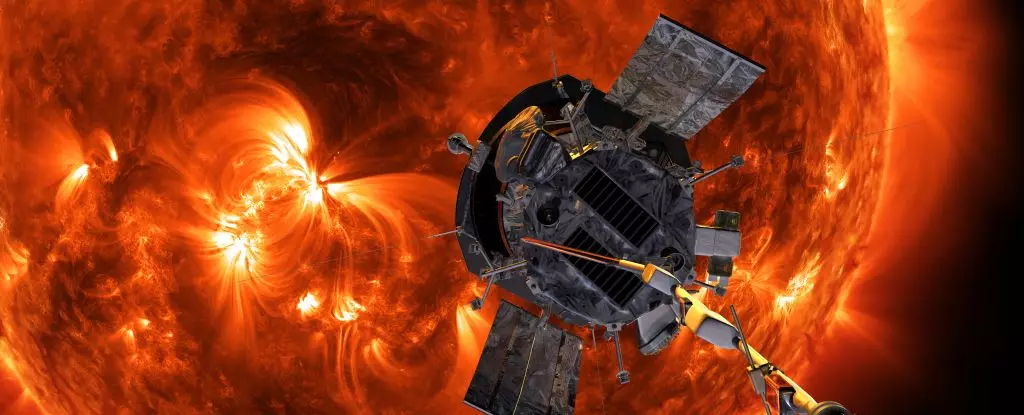NASA’s Parker Solar Probe is poised for another monumental moment on December 24, 2023, when it will make history by approaching the Sun closer than any human-made object has ever attempted. This event marks the spacecraft’s 22nd close flyby, known as perihelion, where it will skim a mere 6.1 million kilometers (3.8 million miles) above the Sun’s surface while traveling at an astounding velocity of approximately 192 kilometers per second. With all systems functioning optimally, Parker is set to execute its risky maneuver at precisely 06:53 EST (11:53 UTC). This flyby is not merely a numerical feat; it underscores the ambitious spirit of NASA’s mission to innovate and explore some of the most critical unsolved mysteries of our solar system.
Launched in 2018, the Parker Solar Probe was engineered to venture into the Sun’s outer atmosphere, providing the closest observations and measurements ever recorded. This data is crucial for answering pressing scientific questions regarding solar mechanics. For instance, one of the prevailing enigmas is the unexplained temperature disparity between the Sun’s visible surface—known as the photosphere—and its outer atmosphere or corona, which extends millions of kilometers into space at temperatures significantly higher than that of the surface. Additionally, understanding the origins of the Sun’s magnetic field and the underlying processes that drive its solar activity cycles remains a central focus of investigation. Parker’s mission is pivotal, as it aims to collect data from this inhospitable environment that could shed light on these and other unresolved questions.
A Mission of Human Ingenuity
Astrophysicist Nour Raouafi from Johns Hopkins University likens Parker’s endeavor to “almost landing on a star,” emphasizing the audacity behind this mission. Such comparisons to historical feats, like the Moon landing of 1969, reflect society’s fundamental desire to push the envelope in science and exploration. The sheer determination to follow through with such groundbreaking projects showcases not only technological progress but also the inspiring human capacity for innovation. The anticipated data transmissions post-flyby will mark a significant achievement, allowing scientists to engage with previously unexplored solar mysteries.
Following its close approach, Parker is expected to send a beacon tone on December 27, initiating the process of data transmission to confirm its successful flyby. Nick Pinkine, who manages the mission operations, noted that no other human-made object has traversed such extreme proximities to our star, making these forthcoming transmissions a gateway to “uncharted territory.” Far beyond the thrill of speed and proximity, the implications of Parker’s research could extend to how we understand solar influence on space weather and its effects on telecommunications and satellite operations on Earth.
With several more perihelion passes scheduled in 2025, each at comparable speeds and distances, the Parker Solar Probe is set to gather a wealth of significant data in a short time. These flybys, including upcoming dates in March and June, can potentially advance human understanding of solar dynamics and their repercussions on Earth.
However, the lifespan of this audacious spacecraft is not eternal. Eventually, Parker will deplete the fuel needed for its trajectory adjustments. Once this critical resource runs out, the probe will succumb to the intense heat of the Sun, likely culminating in a spectacular, fiery finish as its components incinerate. As Parker descends into its final moments, the remnants of its structure may remain in orbit for millions of years—a testament to a journey defined by exploration and discovery.
Ultimately, the Parker Solar Probe epitomizes the apex of human curiosity and technological capability, venturing into realms previously thought unattainable. As we look forward to the knowledge it will unveil, it stands as a beacon of what humanity can achieve when we dare to seek the unknown, forging our path further into the solar system’s vast mysteries. Whether it is understanding the Sun’s complex behavior or preparing for the inevitable end of the spacecraft, Parker’s historical flight path inspires hope for continued exploration—and perhaps—more profound revelations that await us in the universe.


Leave a Reply